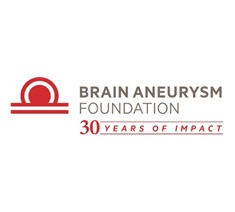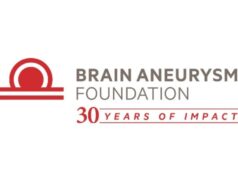 The Brain Aneurysm Foundation (BAF) has been joined by advocates from more than two dozen US states to support ‘Ellie’s Law’—a bipartisan bill recently reintroduced in US congress to increase research funding for brain aneurysm detection and the prevention of ruptures.
The Brain Aneurysm Foundation (BAF) has been joined by advocates from more than two dozen US states to support ‘Ellie’s Law’—a bipartisan bill recently reintroduced in US congress to increase research funding for brain aneurysm detection and the prevention of ruptures.
“Surgical interventions for those diagnosed with a brain aneurysm are highly effective, but only if people know they are at risk prior to a rupture,” said BAF executive director Christine Buckley. “After decades of research, we are now on the cusp of new advances, including blood-based biomarkers and AI [artificial intelligence]-based prediction models, that will save lives and prevent long-term disability by detecting aneurysms before a rupture occurs. Continued education and awareness of this disease and its enormous cost to families and society is critical to saving lives, and we are inspired by those who are here to lend their voice and share their stories so they can help others avoid potentially tragic outcomes.”
A recent press release from the BAF details that 2–5% of the general population has an unruptured brain aneurysm—and, each year, approximately 30,000 Americans suffer a brain aneurysm rupture. Half of those individuals will not survive and, of those who do survive, nearly two thirds are left with permanent neurological damage, the release continues.
The BAF goes on to state that, despite the “potential traumatic impact” of brain aneurysms on millions of Americans, federal research funding in the country amounts to less than US$3 annually for every person impacted by the disease.
Bipartisan legislation was recently reintroduced in the US house of representatives (HR 2678) to potentially appropriate US$20 million annually for the National Institute of Neurological Disorders and Stroke (NINDS) to support comprehensive research into unruptured intracranial aneurysms, with a focus on prevention and early detection.
“Now more than ever, it is critical that we secure funding for the NINDS to conduct and support essential research on brain aneurysms, which stands as one of the most underfunded public health crises in our nation,” said US representative Yvette Clarke. “With agencies such as the Department of Human and Health Services (HHS) experiencing budget cuts to its workforce and grants, preventing potentially fatal brain aneurysms and combatting long-term medical consequences for brain aneurysm survivors will require significant innovations [that] only meaningful funding can deliver. Ellie’s Law will make huge strides in cementing our long-term commitment for new treatment discoveries to save the lives of patients—who are, disproportionately, women and African Americans. It’s a privilege to support this necessary legislation and look forward to it being signed into law.”
The BAF’s recent release notes that, while brain aneurysms are most prevalent in people aged 35–60 years, they can also occur in children. In addition, women over the age of 55 years have a higher risk of brain aneurysm rupture than men and are generally at greater risk, while brain aneurysms are seen at higher rates in African American and Latino populations as well.
Ellie’s Law is named for Ellie Helton, a 14-year-old from North Carolina who died from a brain aneurysm on her second day of high school.
“As an advocate for better brain health outcomes, I’m proud to support Ellie’s Law. No family should have to go through the heartbreak or financial burden from a disease we have the power to prevent,” said US senator Markwayne Mullin. “We have to continue pushing for real progress in brain aneurysm research, and I’m committed to working with my colleagues in the senate to make sure that critical funding moves forward.”










